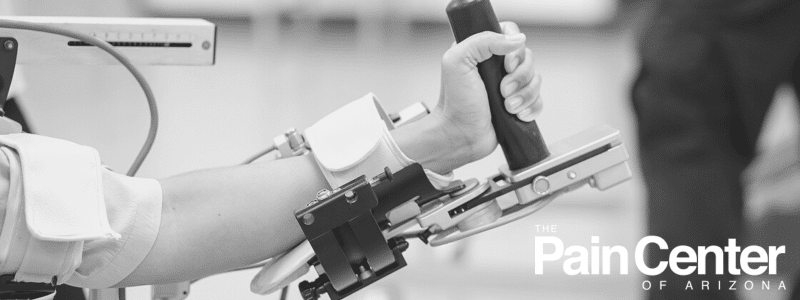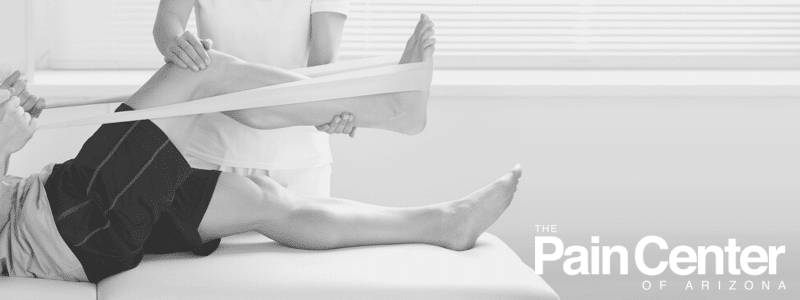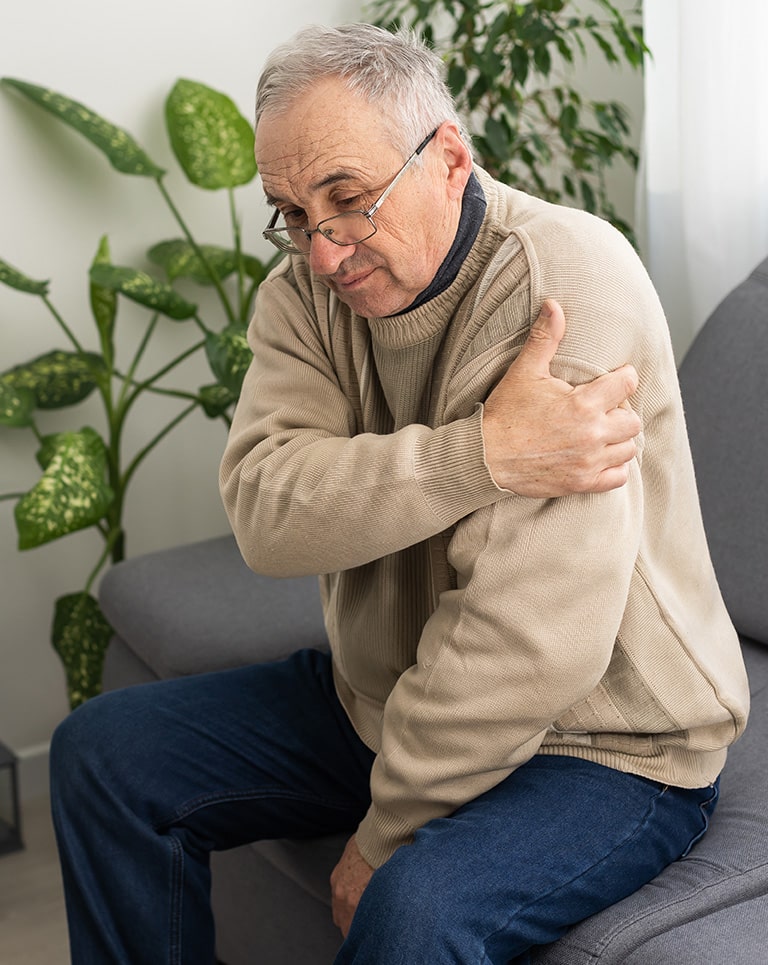
Chronic pain is uncomfortable and limiting, seeking physical therapy is essential to restoration.
In this blog, we’ll discuss:
- What is chronic pain?
- What is the role of physical therapy?
- How many people are treated with physical therapy?
- Should I go to physical therapy if I’m in pain?
- Should I continue physical therapy if it hurts?
- Does physical therapy help with chronic pain?
- Is physical therapy beneficial for chronic knee pain?
- Why does physical therapy alleviate neck/back pain?
- Is there a way to get physical therapy at home?
What is Chronic Pain?

It was previously believed that chronic pain was primarily caused by tissue damage.
But current research suggests that chronic pain can be caused by many internal issues, including:
- Arthritis
- Cancer
- Unhealed sprains or fractures
- Herniated Discs
- Sensitivity of the nervous system
This type of pain can be an ongoing source of struggle from weeks to years–despite medical intervention. While chronic pain cannot be cured, there are ways to reduce the impact of pain symptoms. Alongside an extensive list of treatments, physical therapy is one of the most effective.
What is the Role of Physical Therapy?

Physical therapy helps push past preconceived limitations and helps patients learn to excel with newfound mental and physical strength.
Below are some commonly asked questions about the role of physical therapy.
How Many People Are Treated with Physical Therapy?
As of 2011, approximately 11.7 million people took advantage of physical therapy services– and that number has since grown. Physical therapy can not only help improve injuries and chronic pain but also be a source of preventative care and rehabilitation.
Should I Go to Physical Therapy if I’m in Pain?
Yes! If you are experiencing pain from a previous injury or illness, physical therapy is a great resource. Not only can it make you feel better, but it can also make you stronger.
Should I Continue Physical Therapy if it Hurts?
While physical therapy can test your strength and make you sore, it should never become painful. If you begin experiencing actual pain from physical therapy treatment, stop immediately and consult with your therapist or primary care provider.
Does Physical Therapy Help with Chronic Pain?

Physical therapy is one of the leading treatments in pain management. As chronic pain impacts major areas of daily life, it’s important to learn how to get your pain under control. Treatment plans are customized to your individualized needs, but there are two major categories that physical therapy falls under exercises and passive therapy. Exercises consist of:
- Stretches
- Low-impact aerobic exercises
- Strengthening exercises
- Exercises that target your specific area of pain
Examples of passive therapy include:
- Dry needling
- PNE (pain neuroscience education)
- Massages
- Heat and ice
As physical therapy pivots around your source of pain, below will discuss how PT can relieve discomfort in common areas of the body.
Is Physical Therapy Beneficial for Chronic Knee Pain?
With mobility-centered exercises, physical therapy focuses on increasing the range of motion in your knee. This can improve your ability to walk, use the stairs, or transition between seated and standing positions, increasing strength exponentially and decreasing pain. With consistency, physical therapy exercises can manage chronic knee pain.
Why does Physical Therapy Alleviate Neck/Back Pain?

Similar to PT efforts for knee pain, physical therapy exercises for chronic neck and back pain intentionally strengthen your muscles. Individualized treatments will reduce the stiffness and pain in these areas and help you regain normal movement.
Is Chiropractic or Physical Therapy Better for Neck Pain?
While practices like chiropractors are popular and successful in reducing chronic neck/back pain, physical therapy is the better option for long-term improvement. This is because chiropractors focus on one specific muscle or muscle group, while PTs focus on overall musculoskeletal movement. Focusing on the whole body will restore function and allow you a chance at full recovery, not just temporary relief.
Is There a Way to Get Physical Therapy at Home?
If leaving your house is not an accessible option, at-home care is a great alternative. Recommended by your healthcare provider, you can get a referral to a local visiting nursing service.
Nurses or physical therapists will then come directly to your home to assist you. Some therapy offices will also offer telemedicine calls, where you can meet directly with a provider virtually. With both options, you are able to access physical therapy treatments from the comfort of your own home.




